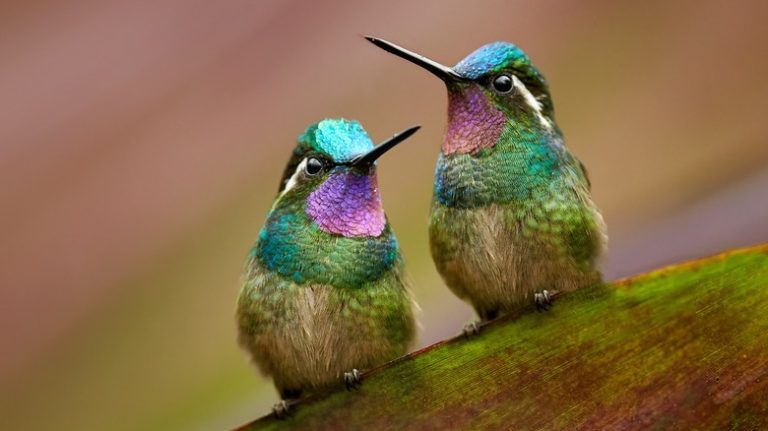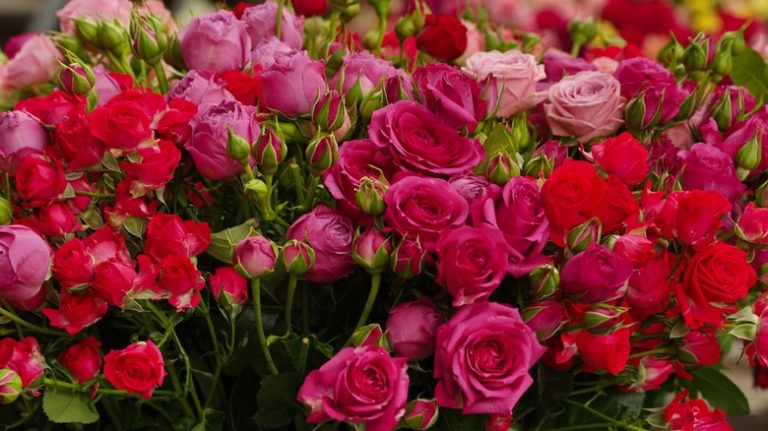When it comes to adding an excellent touch of color and beauty to your garden, few plants are as sensitive and rewarding as tuberous begonias. These spectacular flowers take time to bear their stunning blooms, but the wait is definitely worth it. With their frequently larger-than-life flowers and fun, mounded growth habit, tuberous begonias are sure to leave a lasting impression.
One of the key features of tuberous begonias is their sensitivity to frost. These plants must be grown in frost-free areas or protected indoors during the cold season. Once the danger of frost has passed, these plants can be brought out of their winter resting period and put back on display.
When planting tuberous begonias, it is important to choose a well-draining spot in your garden or use a container-grown variety. They prefer a slightly shaded area, where they are protected from direct sunlight during the hottest hours of the day. Tubers should be planted with the concave side facing upwards and covered with a thin layer of soil. A spacing of about five inches between tubers is recommended for optimal growth.
Tuberous begonias grow best in a temperature range of 60-70 degrees Fahrenheit. They can suffer from diseases such as powdery mildew or damage from slugs, so it’s important to keep an eye out for any signs of trouble.
Once your tuberous begonias start blooming, you will be amazed by the colorful display they provide. These flowers come in a wide variety of types, including single, double, and rose-like blooms. Their long stems make them a great choice for cut flowers, and they can last for a long time in a vase if cared for properly.
Tuberous begonias require a bit of aftercare to ensure they keep blooming. Deadheading and thinning out the blooms will stimulate more flower production and keep the plants looking tidy. If you live in a deer-prone area, it’s best to protect the plants with wire mesh or other barriers to prevent damage.
With the right growing conditions and proper care, tuberous begonias can be the star of your garden, providing a stunning display of color and beauty for months on end. So why not give these showstopping flowers a try?
Source: Justin Lukasavige, “How to Grow Showstopping Tuberous Begonias”
Growing and caring for Tuberous Begonias
Tuberous begonias are beautiful flowering plants that can brighten up any garden or container. They come in a variety of colors and types, and are known for their showstopping flowers. If you’re thinking about growing tuberous begonias, here are some tips for growing and caring for these stunning plants.
1. Temperature: Tuberous begonias prefer cooler temperatures, so it’s best to plant them when the threat of frost has passed. They can go dormant in winter, similar to caladium bulbs.
2. Light Exposure: Tuberous begonias prefer partial shade to full shade exposure. They’re sensitive to direct sunlight and high temperatures, so it’s important to provide them with some protection from the heat of the day.
3. Watering: Tuberous begonias typically need regular waterings, especially during hot and dry weather. However, make sure not to overwater them as they can be prone to rot. Water thoroughly and allow the soil to dry out slightly between waterings.
4. Fertilizing: Tuberous begonias benefit from regular fertilizing during the growing season. Use a balanced fertilizer according to the package instructions. Be careful not to overfertilize, as this can cause excessive foliage growth without many flowers.
5. Soil and Planting: Tuberous begonias prefer well-draining soil that is rich in organic matter. They can grow in garden beds or containers. If you’re planting them in containers, use a high-quality potting mix. When planting, make sure the tuber is placed about an inch below the soil surface and spaced about a foot apart.
6. Winter Care: Once the growing season ends and the foliage begins to die back, it’s time to prepare your tuberous begonias for winter. Dig up the tubers and gently remove any excess soil. Let them dry for a few days, then dust them with a fungicide to prevent mold. Store them in a cool, dry place where temperatures stay above freezing.
7. Pests and Diseases: Tuberous begonias can be prone to pests like whiteflies and deer. To protect them, you can cover them with netting or use a deer repellent. Additionally, be on the lookout for diseases like powdery mildew and treat them accordingly.
By following these tips, you can grow and care for tuberous begonias successfully. Whether you start them in a greenhouse or directly in your garden, these stunning flowers are sure to be a showstopper in any setting. Good luck!
How to Grow Showstopping Tuberous Begonias
Tuberous begonias are known for their stunning showstopping flowers, with vibrant red, rose-pink, and double petals that can be as large as a dinner plate. These beautiful plants are a popular choice for gardeners who want to add a pop of color to their beds and borders.
When growing tuberous begonias, it’s important to start with healthy tubers. Look for tubers that are firm and plump, with little to no mold or damage. If you’re not sure what type of tubers to choose, go for proven performers like the ‘Rose’ variety, which is a popular favorite among gardeners.
Tuberous begonias can be started indoors in plastic bags filled with growing medium or directly planted outdoors. If starting indoors, place the tubers in plastic bags with some dampened sphagnum moss or perlite. Keep the bags in a high-humidity environment, like a greenhouse or a plastic storage bin with a lid, until the tubers sprout.
For outdoor planting, choose a well-draining location with dappled shade and moist, rich soil. Tuberous begonias prefer a cooler environment and will bloom best in areas with mild summers and cool nights. Avoid areas with strong, direct sunlight as it can lead to scorching or wilting of the foliage.
Plant the tubers with the concave side facing up, about 1-2 inches deep, and space them at least 12 inches apart. While tuberous begonias can be planted anytime from late spring to early summer, it’s best to wait until the danger of frost has passed and the soil has warmed up. This will help prevent any potential damage to the tubers.
During the growing season, tuberous begonias require regular watering to keep the soil evenly moist. Water the plants at the base to avoid wetting the foliage, as this can lead to diseases and problems like powdery mildew. Mulching with a layer of organic matter, such as compost or well-rotted manure, can help retain moisture and suppress weeds.
Tuberous begonias are perennials but are frost-tender. To overwinter them, stop watering the plants in the fall and let them go into dormancy. Remove the foliage once it turns yellow and dry, then carefully lift the tubers from the soil. Dust off any excess soil and store the tubers in a cool, dry, and dark place until spring. Be sure to label each variety individually to avoid confusion when replanting.
In the spring, start growing tuberous begonias again by planting the tubers in pots or directly in the ground. Gradually acclimate them to outdoor conditions by placing them in a sheltered location for a few hours each day, increasing their exposure to sunlight and wind over time.
Tuberous begonias are generally free of pests and diseases, but slugs can be a problem. If you notice slugs are eating your tuberous begonias, try using organic slug control methods or setting up beer traps to catch and remove them.
It’s important to note that tuberous begonias are not hardy in all areas. Their hardiness depends on the variety and the growing conditions. While they can be grown as annuals in colder climates, in warmer regions they may survive the winter and return year after year.
Overall, tuberous begonias are a stunning addition to any garden with their showstopping flowers and lush foliage. With the right care and attention, these plants can provide months of colorful blooms and bring joy to every gardener.
BASICS
When it comes to growing showstopping tuberous begonias, there are a few basic factors you need to keep in mind:
- Watering: Tuberous begonias need to be watered regularly, especially during hot and dry weather. Make sure to water the plant thoroughly, allowing the water to soak into the soil.
- Propagation: Tuberous begonias can be easily propagated from cuttings. Simply cut off a stem from the mother plant, remove the lower leaves, and place the cutting in a plastic bag with some moist soil or sand.
- Planting: When planting tuberous begonias, make sure to choose a location with dappled sunlight, as direct sunlight can scorch the plant’s leaves. Dig a hole that is deep enough to accommodate the tuber and gently place it in the hole, making sure that the “eyes” or growing points are facing up.
- Feeding: Tuberous begonias are heavy feeders and require regular feeding to grow and flower well. Use a balanced fertilizer and follow the instructions for application.
- Hardiness: Tuberous begonias are not frost-tolerant and should be protected from freezing temperatures. They are typically grown in frost-free greenhouse or protected areas in colder zones.
- Pests and Diseases: Common pests that can affect tuberous begonias include aphids, slugs, and snails. Keep an eye out for these pests and take appropriate measures to control them. Tuberous begonias are also susceptible to diseases such as powdery mildew and botrytis. Provide good air circulation and avoid overhead watering to prevent these diseases.
- Transplanting: Tuberous begonias can be transplanted once the danger of frost has passed. Carefully dig up the tuber and its attached roots, taking care not to damage them. Replant the tuber in a new location, making sure to provide adequate space for the plant to grow.
By following these basic tips, you will be well on your way to growing beautiful tuberous begonias that are sure to be the showstoppers of your garden!

